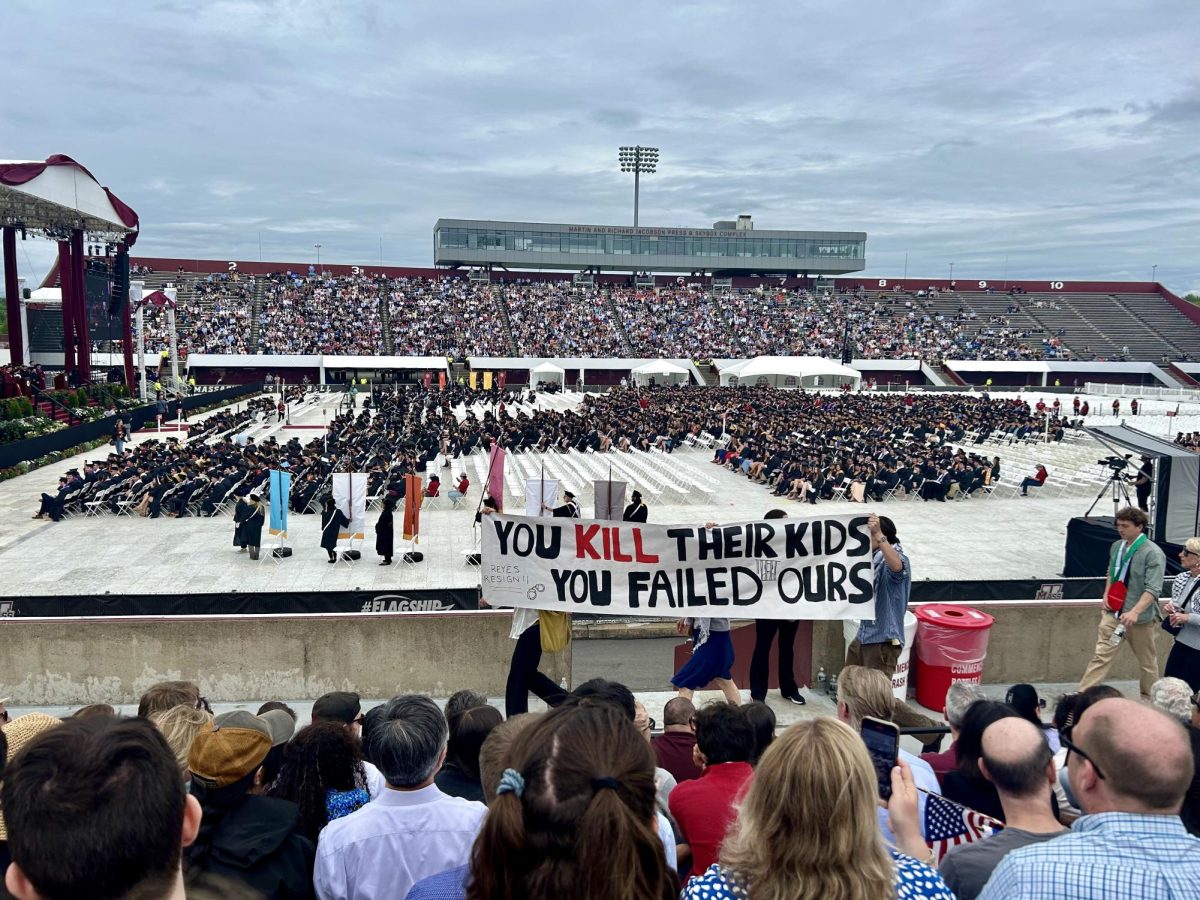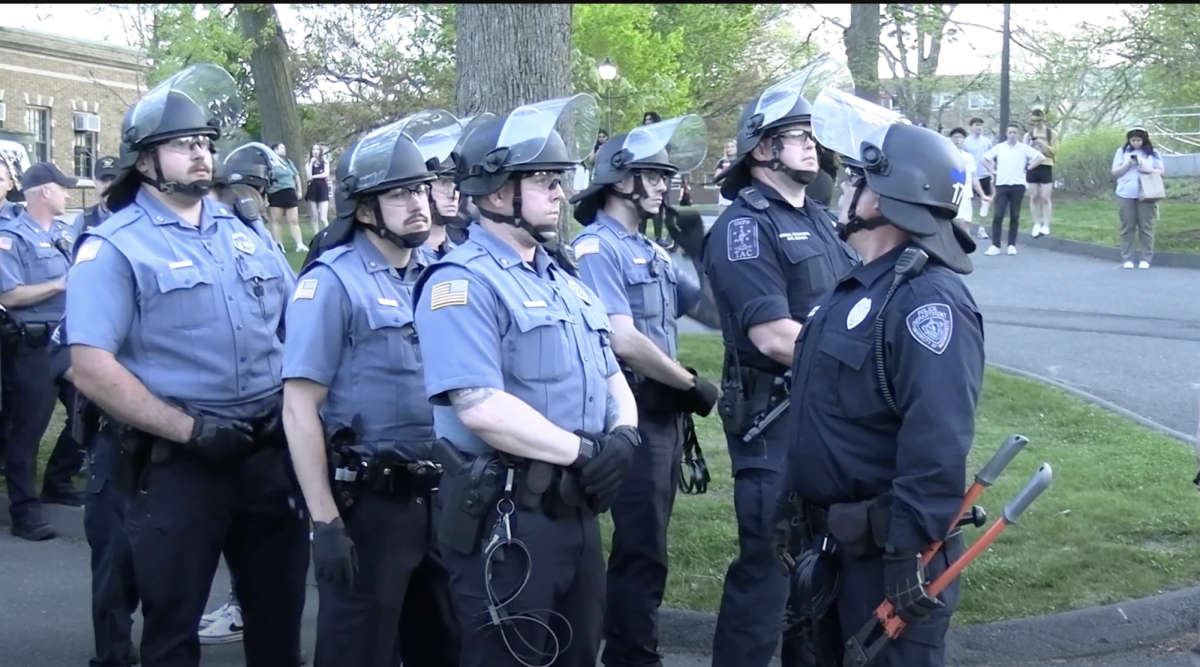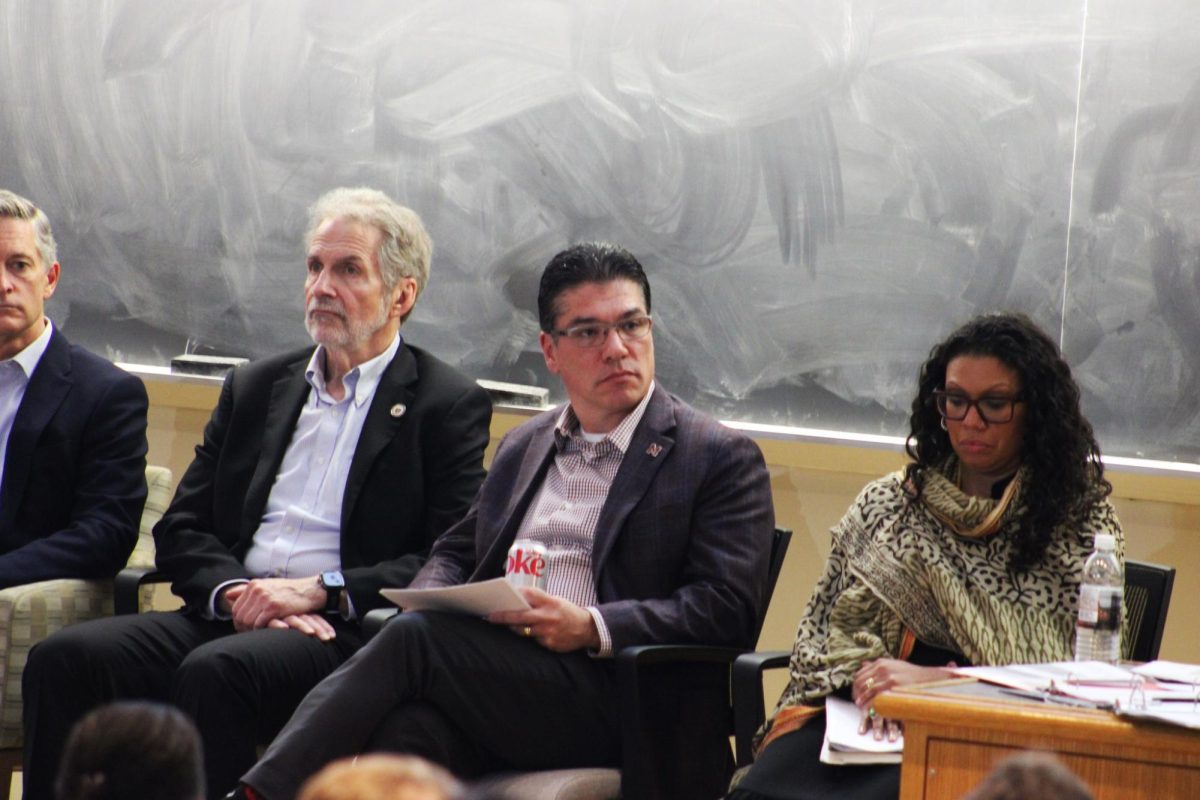 The Southwest residence area of the University of Massachusetts has been called a concrete jungle by students for years, but that wilderness is now planned to turn from barren cityscape to college metropolis, ripe with vegetation.
The Southwest residence area of the University of Massachusetts has been called a concrete jungle by students for years, but that wilderness is now planned to turn from barren cityscape to college metropolis, ripe with vegetation.
Trees and plants will bloom in Southwest starting in June, marking the beginning of planned new aesthetics for the largest residential area on campus. The Southwest outdoor concourse will be landscaped with various trees, pathways, plants and new ground materials to create a fresh environment, making it similar to the greener residential areas on campus.
The $12 million project, funded by state bonds, is being directed by Bruce Thomas of the University of Massachusetts and the Stephen Stimson Associates, Landscape Architects of Falmouth, Mass.
Thomas said he hopes the final results of the concourse will be a more visually pleasing, environmentally sustainable Southwest. He said he hopes “to improve the tired plant materials and hardscape, to create a more contemporary and sustainable environment that embodies the Pioneer Valley, to create user friendly spaces and to install a landscape as a classroom.”
Southwest houses 5,000 students in 16 buildings, including five towers, each reaching over 20 floors. There are also 11 low-rise buildings in the residential area. The project’s planners hope the low-rises will provide a greener view of campus for the fall of 2010. Though the current concrete standing buildings will stay intact, new lush gardens and plants will give way to what the planners believe will be a new appreciation for nature in an urban environment.
The new concourse landscape is expected to be complete by the end of the upcoming summer. Thomas stated he feels students will come to appreciate the setting of Southwest more and enjoy their surroundings to a greater extent than Southwest currently facilitates.
“It’s a nicer environment to live and learn. It is about the quality of life in Southwest,” he said. “Southwest is getting old and tired, it’s just plants and trees that will revitalize.”
The Berkshire Dining Commons has a poster on display depicting the landscaping plans, though word about the upcoming renovations has not been widely discussed.
Annie Oakman, a UMass freshman and Melville resident, said she believes the new nature will help make Southwest a more appealing spot.
“I think it’ll help Southwest right now, it will be appealing to prospective students,” she said.
Anastasia Zolides a freshman Patterson resident said she feels the development will alleviate what she sees as Southwest’s current sparseness.
“With new vegetation it will be more welcoming,” she said. “It’s barren right now, it will make it feel more clean.”
Sam Billings, a UMass student who researched the concourse for a sustainable agriculture project last semester was at first skeptical of the amount of money being used to update Southwest. After studying the plans, however, he believes the renovations will realistically improve quality of life for students in Southwest.
“Southwest has so much concrete and brick everywhere,” he said. “After living there for five semesters, I know how dreary, windy and brutally cold or hot it can be depending on the season. Aside from aesthetics, which is enormously overlooked when considering quality of life, the trees and infrastructure will help break up the wind, and thereby the cold in the winter and provide shade in summer.”
Billings said he wishes there had been more opportunity for student involvement in the development.
“The students should be involved, they’re going to be the ones living there, and I know so many that know an awful lot about planting and growing food,” he said. “However, since the project is in the summer, and the university has a professional crew prepared, I don’t think that will be much of an option – especially since there are strict time requirements.”
Billings described how he felt student involvement could have been incorporated in the project. “With $12 million, one would like to imagine that as an agricultural school, some agricultural, horticultural, permacultural, pharmacultural students and or faculty could have been involved in producing some low-maintenance food [with vegetation].”
The project was initiated in Nov., 2008. Most Southwest residents will not see the progress this summer, but in the fall semester there will be major changes and improvements for the Southwest area and prospective students.
Chelsea Whitton can be reached at [email protected].












